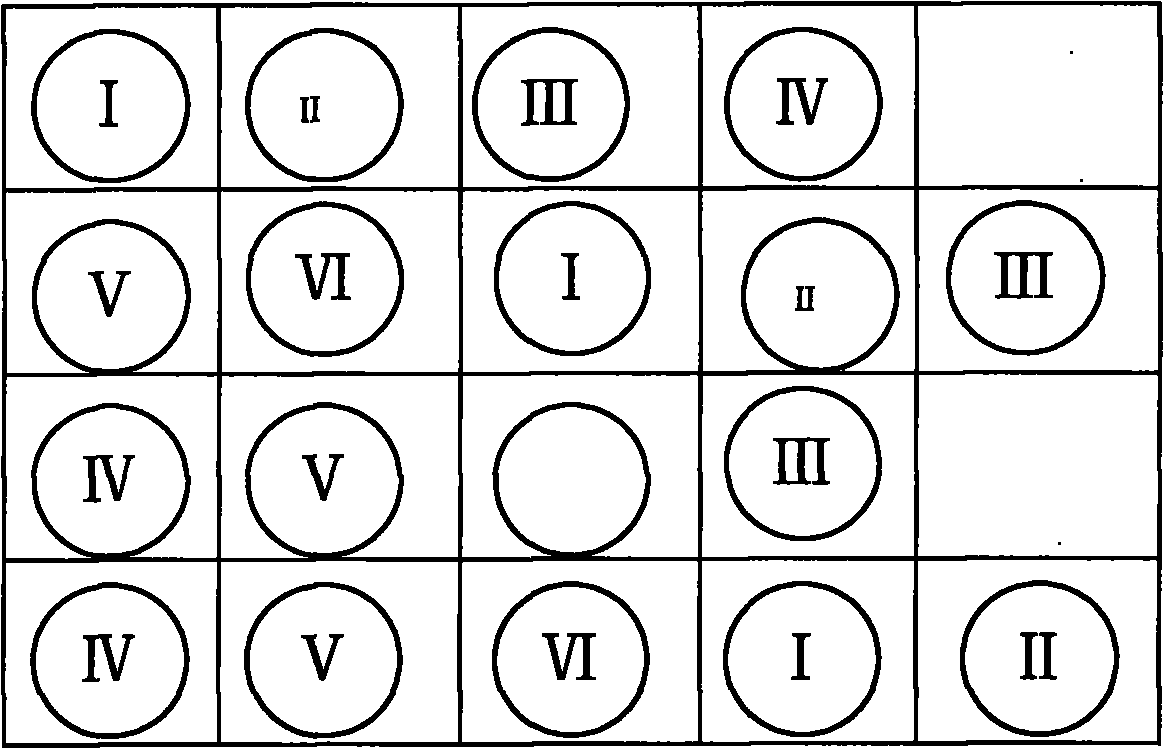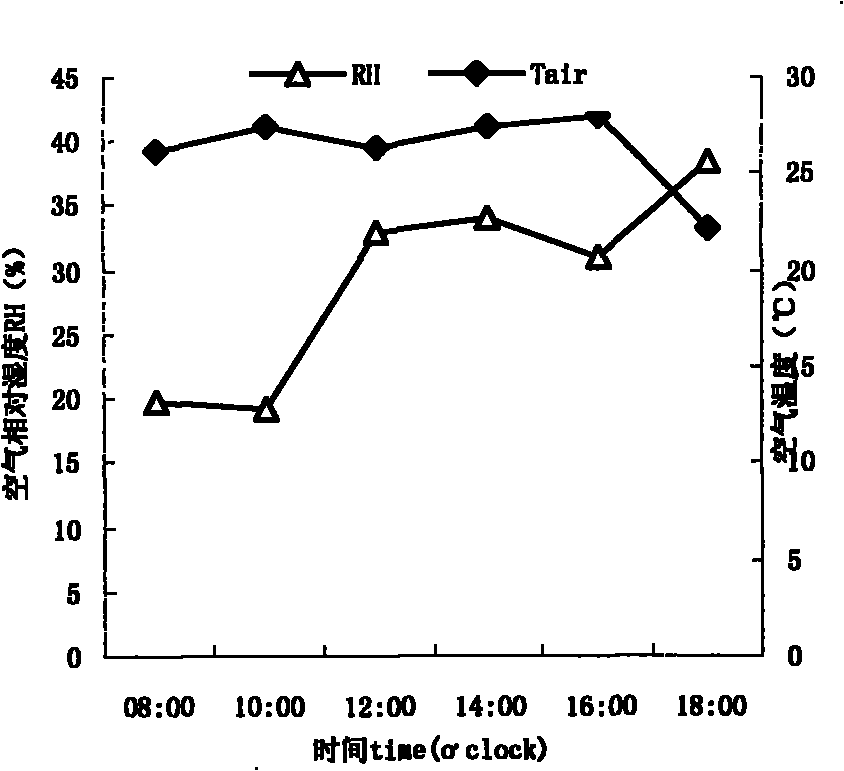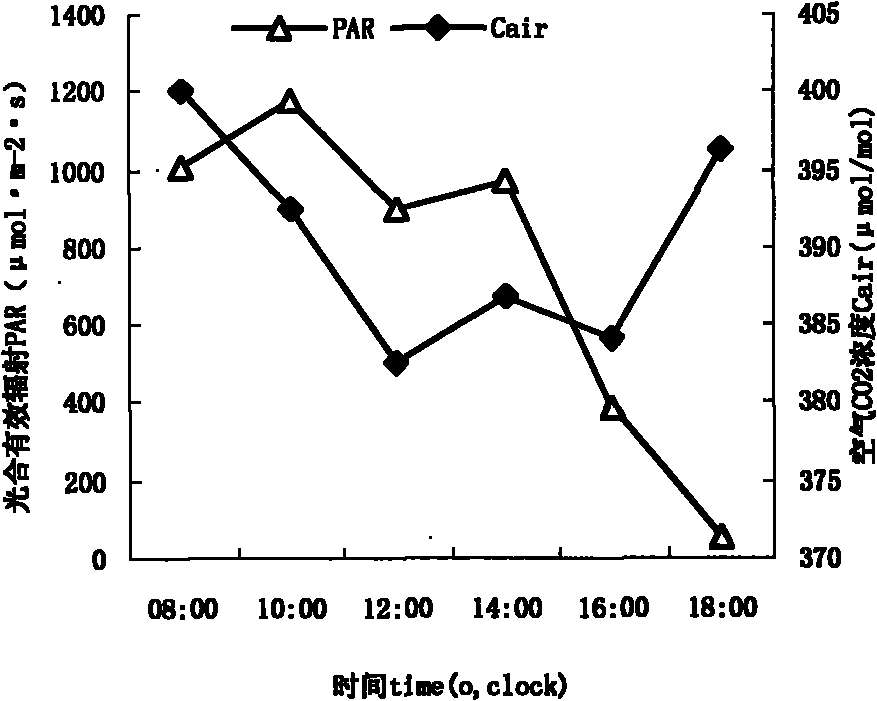Method for improving photosynthetic capacity of tall fescue by adopting saline soil filled with waste crumb rubber
A technology of waste rubber particles and tall fescue, applied in chemical instruments and methods, botanical equipment and methods, applications, etc.
- Summary
- Abstract
- Description
- Claims
- Application Information
AI Technical Summary
Problems solved by technology
Method used
Image
Examples
Embodiment 1
[0060] (1) Substrate composition: 1000g of sand is placed on the bottom of the container, 20g of waste rubber particles is placed on it, the third layer is 1500g of saline soil, and a layer of 100g of loam is laid on the top; wherein the concentration of saline soil is 0.2% NaCl; Methods: The annual average temperature of the experimental site is 12.3°C, and the average precipitation is 550mm. During the experiment, the average temperature is 23.7°C, and the average precipitation is 380m. Lawn grass is tall fescue;
[0061] (2) After the turfgrass grows stably, 10 plants are randomly selected to measure the plant height, and photosynthesis is measured after 60 days. Afterwards, the aboveground part is mowed, and the stubble height is 3 cm, and the growth is resumed. After the next year's safe winter, 10 plants are randomly selected to measure the second crop The plant height and the aboveground biomass and belowground biomass of the second-crop grass were measured after mowing...
Embodiment 2
[0063] (1) Substrate composition: 1000g sand is placed on the bottom of the container, 20g waste rubber particles are placed on it, the third layer is 1500g of saline soil, and a layer of 100g loam is laid on the top; wherein the concentration of saline soil is 0.8%NaCl; For the method of potting, the annual average temperature of the experimental site is 15°C, and the average precipitation is 680mm. During the experiment, the average temperature is 24.5°C, and the average precipitation is 560mm. 1mm; lawn grass is tall fescue.
[0064] (2) After the turfgrass grows stably, 10 plants are randomly selected to measure the plant height, and photosynthesis is measured after 60 days. Afterwards, the aboveground part is mowed, and the stubble height is 3 cm, and the growth is resumed. After the next year's safe winter, 10 plants are randomly selected to measure the second crop The plant height and the aboveground biomass and belowground biomass of the second-crop grass were measured...
Embodiment 3
[0066] (1) Substrate assembly: 1000g sand is placed on the bottom of the container, 20g of waste rubber particles is placed on it, the third layer is 1500g of saline soil, and a layer of 100g loam is laid on the top; wherein the concentration of saline soil is 0.4%NaCl; Methods: The annual average temperature of the experimental site is 15°C, and the average precipitation is 680mm. During the experiment, the average temperature is 24.5°C, and the average precipitation is 560mm.
[0067] (2) After the turfgrass grows stably, 10 plants are randomly selected to measure the plant height, and photosynthesis is measured after 60 days. Afterwards, the aboveground part is mowed, and the stubble height is 3 cm, and the growth is resumed. After the next year's safe winter, 10 plants are randomly selected to measure the second crop The plant height and the aboveground biomass and belowground biomass of the second-crop grass were measured after mowing.
PUM
| Property | Measurement | Unit |
|---|---|---|
| diameter | aaaaa | aaaaa |
| diameter | aaaaa | aaaaa |
| diameter | aaaaa | aaaaa |
Abstract
Description
Claims
Application Information
 Login to View More
Login to View More - R&D
- Intellectual Property
- Life Sciences
- Materials
- Tech Scout
- Unparalleled Data Quality
- Higher Quality Content
- 60% Fewer Hallucinations
Browse by: Latest US Patents, China's latest patents, Technical Efficacy Thesaurus, Application Domain, Technology Topic, Popular Technical Reports.
© 2025 PatSnap. All rights reserved.Legal|Privacy policy|Modern Slavery Act Transparency Statement|Sitemap|About US| Contact US: help@patsnap.com



